Beautiful Plants For Your Interior
Rhodo Species In The Garden
Much to the horror of my European rhododendron friends, I am not a great fan of species rhododendrons. I know that the foliage characteristics can be beautiful, but I am much too much interested in high-ornamental flowers that, most of the time, species lack. I am listing here the very small number of species plants in my garden that I feel compete equally with hybrid rhododendrons.
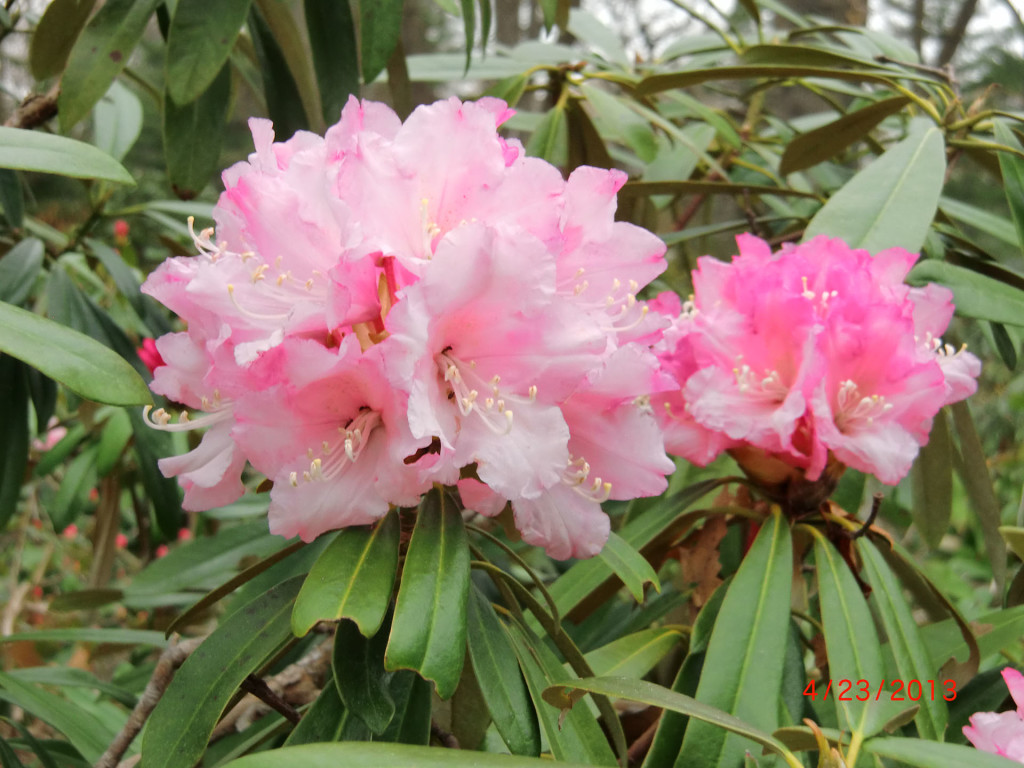
Adenopodum, Hardgrove form – Nearing had subscribed to the last Rock expedition to China and received adenopodum seed from Rock. He grew on about 60 seedlings and allowed Don Hardgrove to select the first one from the nursery row. Don chose very well as the plant he selected holds its leaves 4 years and blooms every spring with full trusses. This is the Hardgrove form of adenopodum. In 1964 this plant was sold to Planting Fields when Hardgrove broke up his garden. The following year I collected open pollinated seed from that plant, knowing it was selfed as adenopodum blooms very early in the spring and nothing else was in bloom at Planting Fields when it was in bloom. I grew on about 30 seedlings and one was particularly impressive. It never fails to open full trusses when no other elepodote is in bloom, holds it leaves 4 years, grows in a compact, full manor and has a light indumentum. It is the equal of any hybrid. I have another seedling that I call compact as it grows about half as fast as the Hardgrove form.
Adenopodum, AM The flower seems slightly different from the Hardgrove adenopodum. Just as hardy and attractive plant but a shy bloomer.
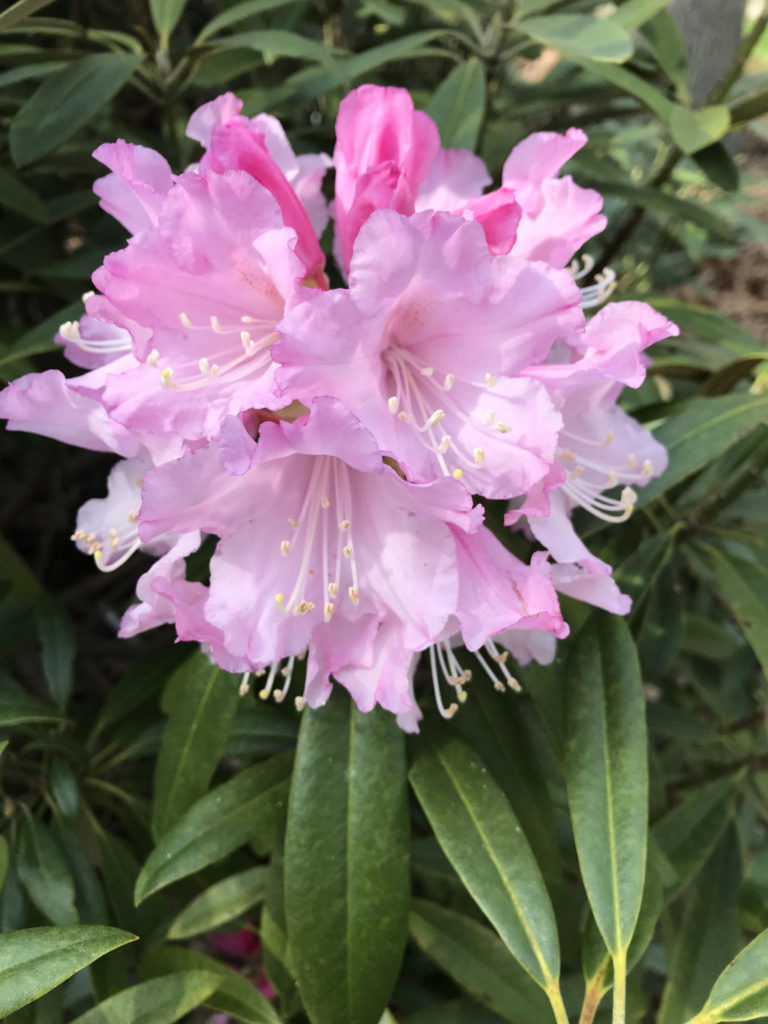
Adenopodum Murcott A seedling that I grew from open pollinated seed from the Hardgrove form at Planting Fields in 1965. This is a very good plant both for flowers and foliage.
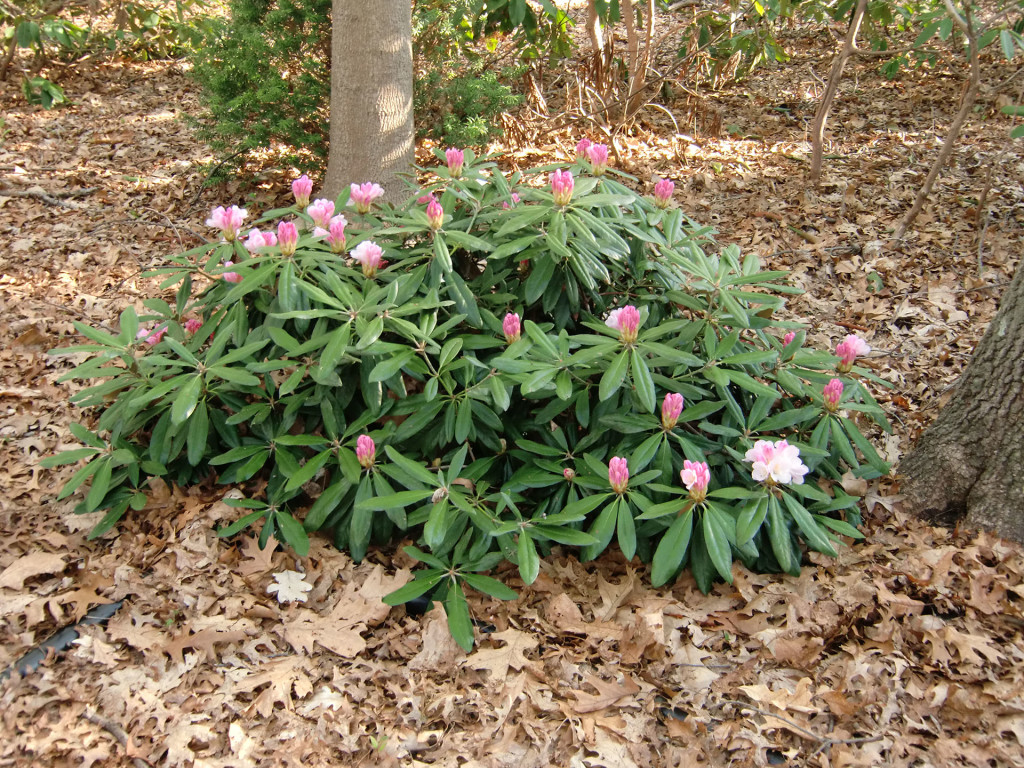
Adenopodum x yak. I know that this is not a species, but the plant is quite beautiful and slow growing. I made this cross about 1975 and only 1 seedling grew. It flowers sparingly with a pink/white truss.
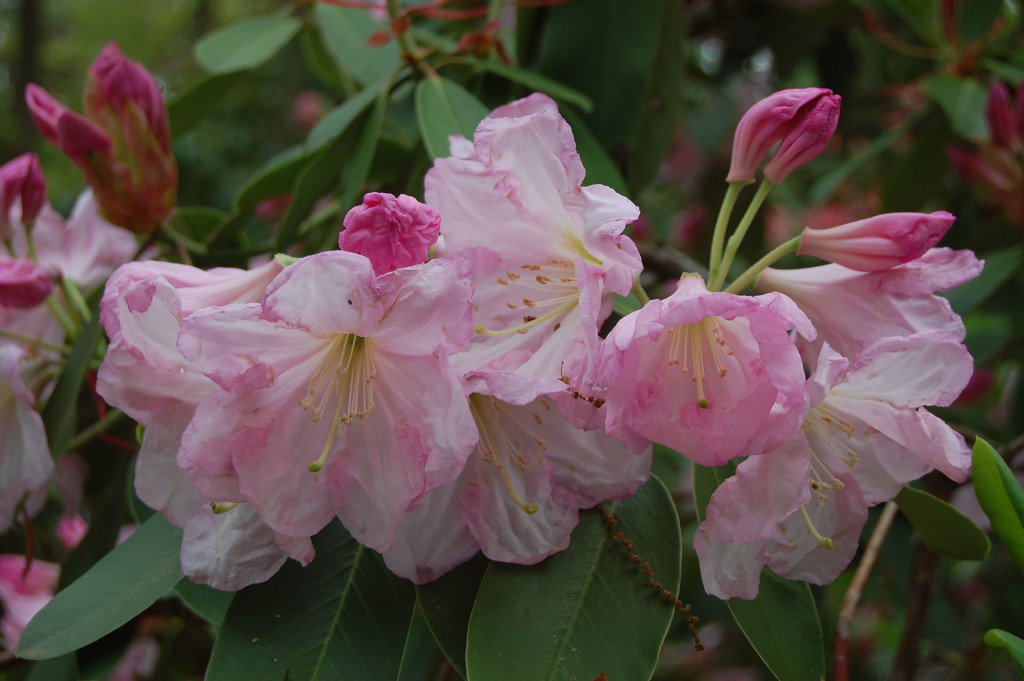
Fortunei, Target Rock. Hardgrove was very friendly with Guy Nearing and indeed got his Hardy fortunei plant from him. Hardgrove did have other fortunei seedlings in his garden that he either got from Nearing or grew from Nearing seed. He sold one of them, together with many other rhododendrons, to Mr. Eberstadt who owned an estate known as Target Rock. I was able to get a cutting from this plant. It is now 10′ in diameter and is quite beautiful having fragrant, pink flowers. It is very fertile and will set an enormous load of seed if not dead headed.
Fortunei. – This is the hardy form that Hardgrove used in his hybridizing. It was developed over many years by Nearing and Gable and was bud hardy for Nearing when he lived in Ramsey, in northern New Jersey. It roots quite easily when cuttings are taken in early February. Nearing said it was fortunei, although others have said that it might be a hybrid. I have noticed that most “experts” in species rhododendrons always think that the plant that you have is probably a hybrid, but of course, they always have the “true” spcies. It is fragrant and quite beautiful.
Makinoi. – In the early 80’s I purchased some collected wild makinoi seed from the ARS seed exchange. These grew beautifully, but after many years some of them got very leggy. Of the 20 or 30 seedlings, three turned out well. Makinoi has some features: it doesn’t put out new foliage until late in the season, after caterpillars have left the garden, so there is never any foliage damage but it is quite prone to drought damage. It will wilt quickly in hot dry summers and if too hot will abort stems. In the right condition, it is spectacular.
Mini: This is the most dwarf of the three. About 3″ across in 25 years and very compact with 5-6″ narrow leaves, heavily indumented and held 4 years and with light pink flowers. The flowers won’t impress you, but the plant is super.
Compact: Larger than mini, about 5′ across in 25 years but with the same foliage features of Mini with a slightly better flower.
Big Mak: This name is taken by another hybrid rhododendron but it suits this plant. Very large plant with 7″ – 8″ long leaves and probably will get too big eventually. My plant had a tree fall on it last year so it doesn’t look very good now. but before the tree-fall it was quite beautiful. Indumented, long, narrow leaves.
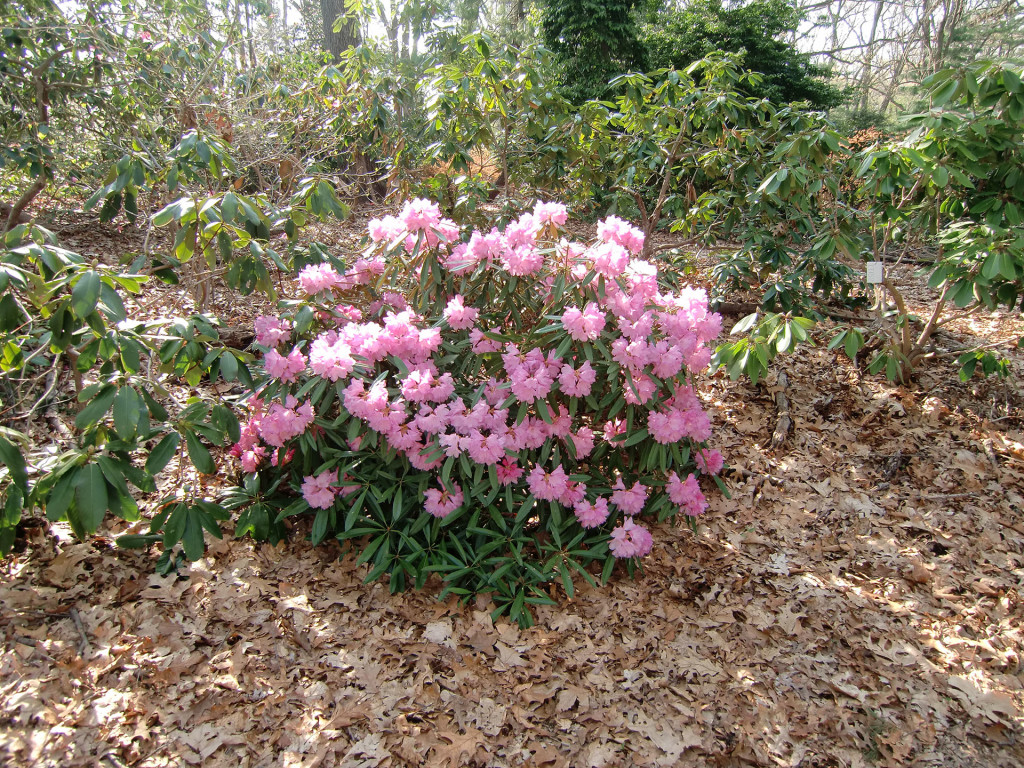
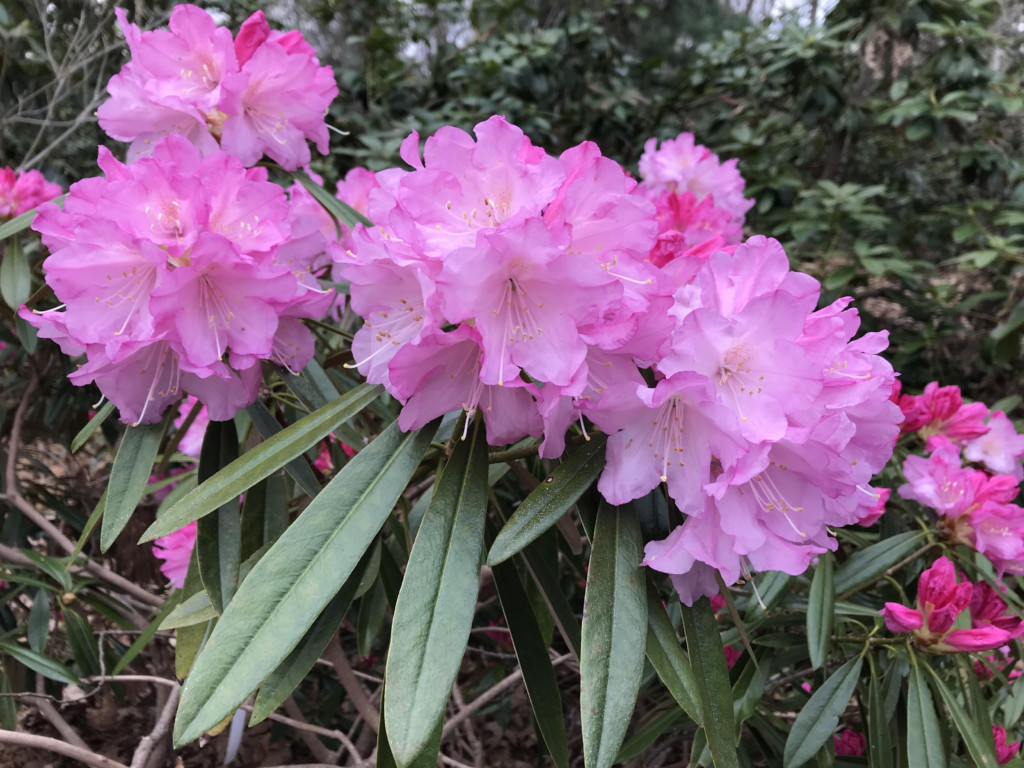
Metternichii, ‘Sir Lancelot’ A wonderful compact plant, slightly indumented, hardy for me. Picture Talen 4/16/21
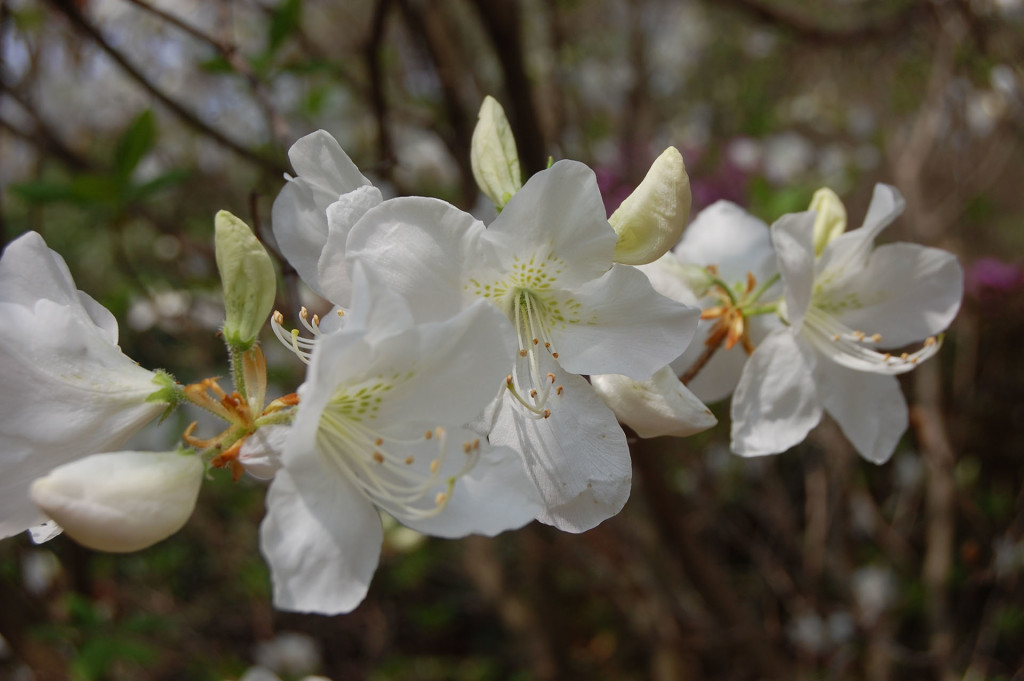
Schlippenbachii alba – Henry Hohman had this plant in his nursery in Maryland. He somehow was able to propagate it (it is despirately hard to asexually propagate it other than grafting) and I was able to get three small plants. One went to Planting Fields, one to Joanne & Fred Knapp and I took one. Mine is about 8′ in diameter and has lovely white flowers every spring. Schlippenbachii is quite nice no matter the color of the flowers. There is a beautiful pink one in the Phipps garden and Sid Burns had a pink one that he had gotten from Joe Gable and eventually named it ‘Sid’s Royal Azalia’ (I think). It does very well from seeds and since it won’t hybridize, any seed is selfed. I put seed of the white form into the ARS seed exchange most every year.
Yakushimanum – When it is good, it is super good. I was able to buy about 12 small (4″ pots) from Fred Serbin back in the early 70’s. These plants came from seed that he had collected on Yaku Island in Japan. He must have had 500 little pots of these plants in his cold house. I tried to select the most compact, dwarf plants which was no small task considering the quantity of plants there. Over the years, these plants have grown at different rates and now express quite a bit of diversity. There are two that I think are particularly good.
Mini Yak: After 30 years, this plant is 24″ in diameter and about 20″ tall. Extreamly compact, its annual growth is less than an inch a year. It is very hard to find cutting wood on the plant. I only have 1 or 2 rooted cuttings of the plant.
Compact Yak: About twice the size of mini in the same number of years. Very dense and compact.
Rest of them: Most of the other seedlings have gotten quite tall, 4 to 5′. The closeness of the plants might cause these to grow tall, but the annual growth on some of them is 5″. They all have a very heavy indumentum, with the new growth covered top & bottom.
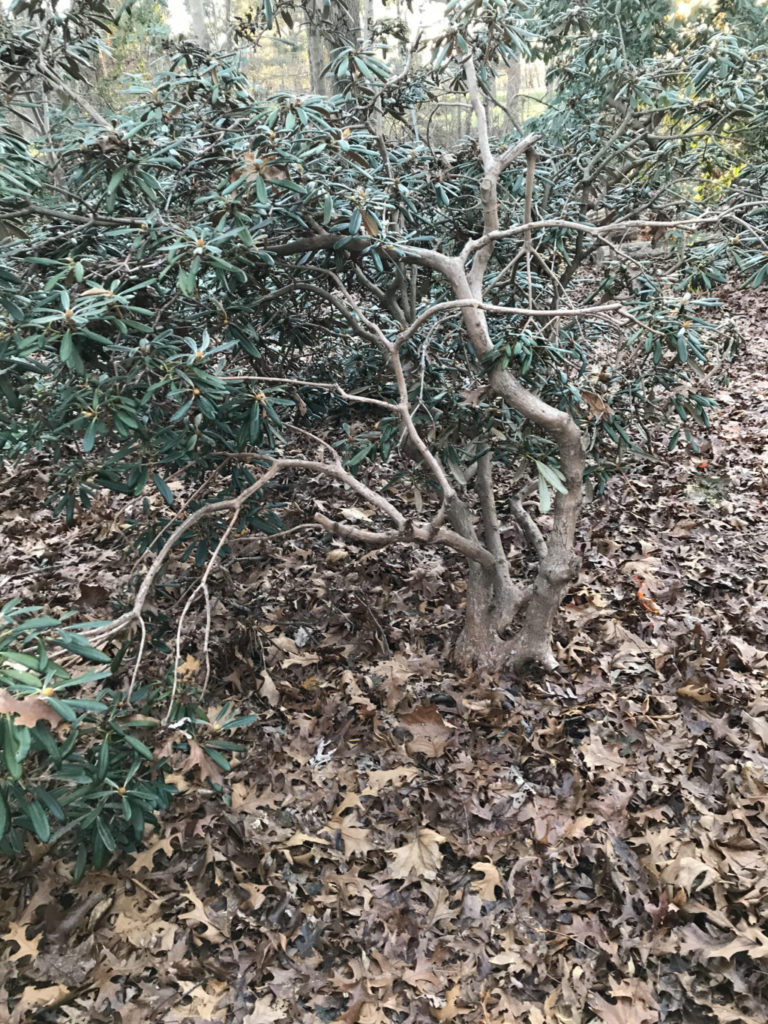 Old Yak
Old Yak
Old yak: After 40 or 50 years some yaks we ugly. It is interesting how such a magnificent plant when it is small can turn into such an ugly plant.

